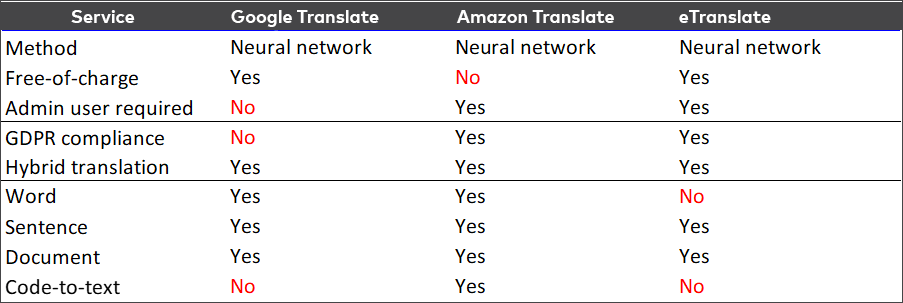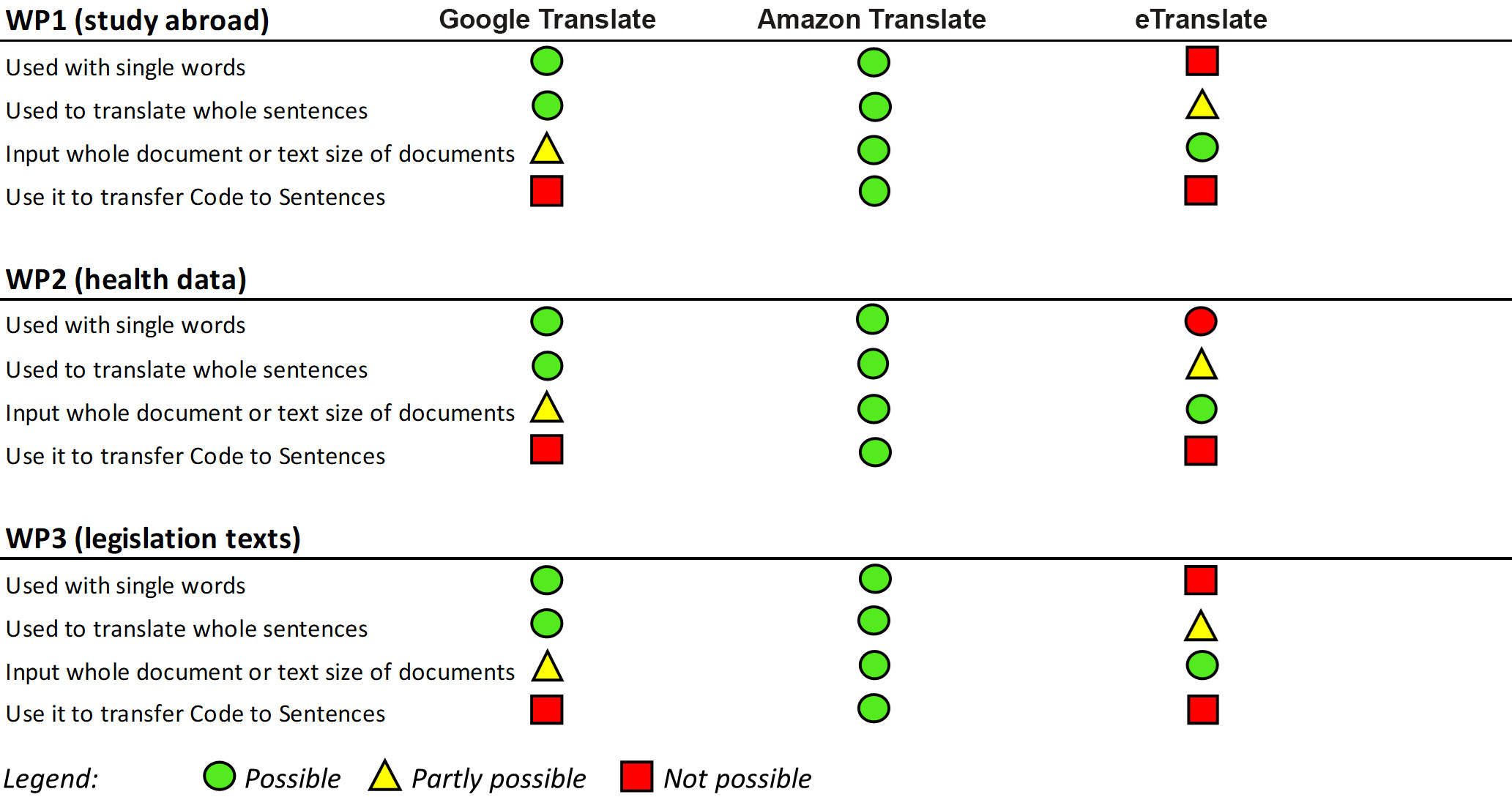Use cases
To make this overview more concrete, the machine translating solutions are viewed in the context of the Cross-Border Data Exchange (CBDE) project’s work packages.
The aim of the CBDE project is to support daily life in the Nordic and Baltic countries.
- In Work Package 1 (WP1), the potential machine translations are related to student data exchange and recognition of achievements, such as course credits. Translations are most often based on translating individual words and sentences, like course descriptions.
- In Work Package 2 (WP2), the subject of translations is related to health information. The information contains ePrescriptions and patient summaries, for which not just any machine translation can be used for information security issues based on the sensitive nature of the translated data. Also, this information is mainly in the form of code set. For WP2, this review focuses on potential future use cases.
- Work Package 3 (WP3) deals with legislative and regulatory information, where the use cases are divided into translation of legal text from legislative databases. The purpose is to translate texts into different languages than the original information is. There are limitations using translation tools when translating legislative data. Translated legislative information is usually unofficial and does not have legal force in court.
Please note that the report and this overview are based solely on theory and the available literature – the machine translation services have not been tested for accuracy with real-life sentences.
Using machine translation services in CBDE Work Packages
The translation services picked for this quick review all proved to have both advantages and some disadvantages. Google Translate is free-of-charge but not GDPR compliant. Amazon Translate keeps an organisation’s data secured in the AWS cloud but requires AWS maintenance knowledge from the organisation utilising the service. eTranslation is free-of-charge and aimed at public administration, but the vocabulary is focused on EU-related matters. None of the systems mentioned should be used without post-translation quality inspection by a skilled language professional.
Below is a more detailed picture of the selected machine translation services based on the use cases studied in the CBDE project, first as a table and then a short analysis by service.

Picture 5. Machine translation services comparison

Picture 6. Machine translation services and CBDE Work Packages
Google Translate
Google Translate is an easy-to-use, free-of-charge machine translation service to translate words, sentences and full documents as well as speech and images. The main challenge is to realise that the content input to Google Translate will be utilised by Google to improve the future translations (and potentially also other Google services).
Google Translate does not understand codes (code-to-text), and the service cannot be trained to understand organisation-specific codes or rules. Other disadvantages of Google Translate include the public nature of the service, the lack of control over the entered data and the distribution of data ownership among third parties. Users cannot manage the stored data in any way, which can cause problems from a data management perspective.
Google Translate will also require post-translation quality inspection and possible refining of the translated text.
Amazon Translate
Amazon Translate is a commercial service that can translate words, texts and documents. It provides an opportunity to manage the input data in a GDPR-compliant way, and uses the Amazon Web Services (AWS) cloud to store an organisation’s data, so the organisation will have control over its own data. The AWS cloud requires an AWS admin from each organisation. The admin is also able to build and modify pre-defined rules to Amazon Translate, which makes it possible to also translate organisation-specific codes to text.
The use of Amazon Translate requires AWS know-how from the organisation. AWS usage will also create costs related to the service, such as AWS products, storage and maintenance.
Amazon Translate requires post-translation quality inspection and refining of the translated text, but the translated words and sentences can be influenced and taught in a certain way with AWS Active Custom Translator (ACT) by the organisation.
EU eTranslation
eTranslation is a translation service available free-of-charge to European public administration. It can be accessed with an EU login. The service can be used safely – the system is run by the European Commission, and it is compliant with GDPR, and can translate several documents into several languages in one session.
eTranslation also gives the user the possibility to choose a domain of the input text. Domain function can be highly useful, as the system has analysed text and documents from various domains, including education, healthcare and legislation. The European Commission states, however, that the translations are most accurate on issues related to the EU.
eTranslation is based on neural machine translation methodology, which means the service learns from the input data. It stores all the input data, but it gives the admin user an opportunity to delete the needed data. The eTranslation service contains all European languages.
The disadvantage of eTranslation could be seen in its limited use: the service requires the creation of EU Login credentials for each service user, and single words and texts under 30 words cannot be translated for eTranslate needs enough data to recognize the language. eTranslation is not capable of translating codes into text, and it also requires post-translation quality inspection and possible refining of the translated text.